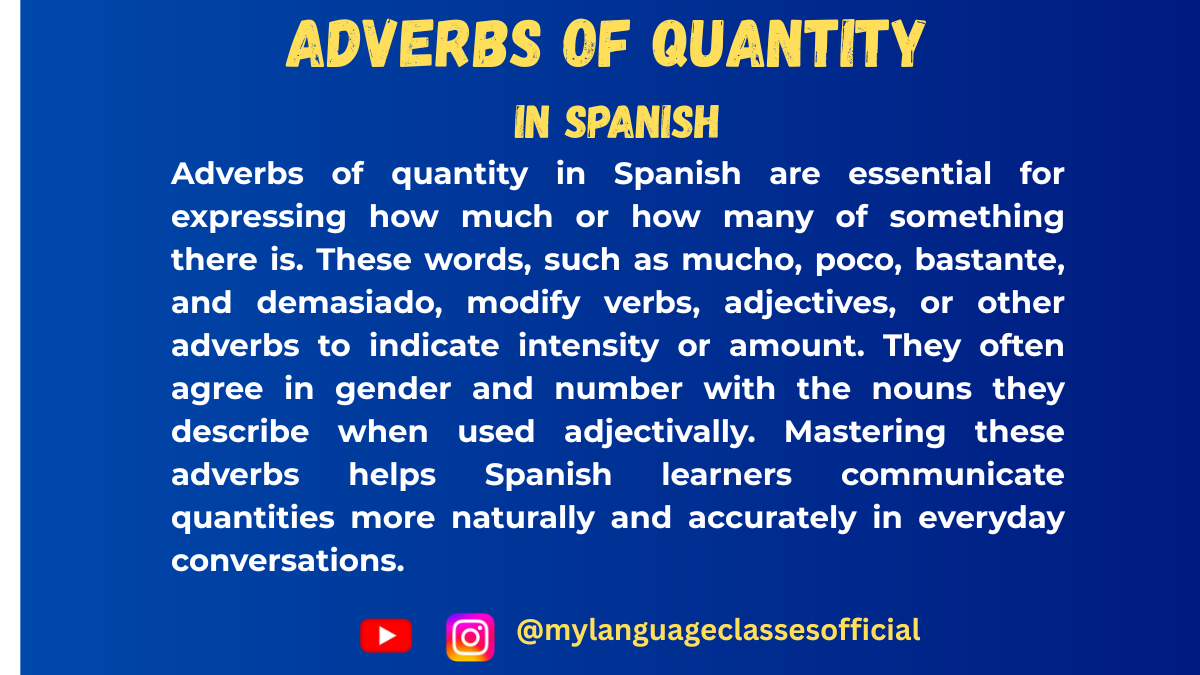Your cart is currently empty!
Tag: learning Spanish online
-

Time Expressions in Spanish: Hace + Time + Que, Desde, Desde Hace, and More
When learning Spanish, mastering time expressions is crucial for effective communication. Expressions like hace + time + que, desde, and desde hace help describe durations, points in time, and ongoing actions. In this blog post, we’ll explore these expressions in detail, provide examples, and offer practice exercises.
Common Spanish Time Expressions
Below is a list of commonly used time expressions in Spanish, their meanings, and example sentences:
Time Expression Meaning Example 1 Example 2 Hace + time + que “It has been (time) since…” Hace dos horas que estudio. (I have been studying for two hours.) Hace un mes que vivo en Madrid. (I have been living in Madrid for a month.) Desde “Since (a point in time)” Vivo en Madrid desde 2020. (I have lived in Madrid since 2020.) No como carne desde enero. (I haven’t eaten meat since January.) Desde hace “For (a duration of time)” Trabajo aquí desde hace cinco años. (I have been working here for five years.) No veo a Juan desde hace meses. (I haven’t seen Juan for months.) Hace + time “(Time) ago” Fui a España hace tres años. (I went to Spain three years ago.) Terminó la tarea hace una hora. (He finished the homework an hour ago.) Llevar + time + gerundio “To have been (doing something) for (time)” Llevo dos años aprendiendo español. (I have been learning Spanish for two years.) Lleva tres horas esperando. (He has been waiting for three hours.) Hace tiempo que “It’s been a long time since…” Hace tiempo que no te veo. (I haven’t seen you in a long time.) Hace tiempo que no viajo. (I haven’t traveled in a long time.) Desde que “Since (something happened)” Desde que me mudé, estoy feliz. (Since I moved, I am happy.) Desde que empezó el curso, estudio más. (Since the course started, I study more.) Al cabo de “After (time period)” Al cabo de dos años, me fui. (After two years, I left.) Al cabo de un mes, nos casamos. (After a month, we got married.) En cuanto “As soon as” En cuanto llegué, comimos. (As soon as I arrived, we ate.) En cuanto lo vi, supe la verdad. (As soon as I saw him, I knew the truth.) More Example Sentences
- Hace cinco minutos que llegué. (I arrived five minutes ago.)
- No veo a mi primo desde hace tres semanas. (I haven’t seen my cousin for three weeks.)
- Estudio español desde el año pasado. (I have been studying Spanish since last year.)
- Desde que cambié de trabajo, soy más feliz. (Since I changed jobs, I am happier.)
- Llevo un mes sin fumar. (I haven’t smoked for a month.)
- Hace dos años que conozco a Marta. (I have known Marta for two years.)
- Al cabo de unos meses, aprendí a nadar. (After a few months, I learned to swim.)
- En cuanto terminó la reunión, salimos. (As soon as the meeting ended, we left.)
- Hace tiempo que no voy al cine. (I haven’t been to the cinema in a long time.)
- Desde que empezó la pandemia, trabajo desde casa. (Since the pandemic started, I have been working from home.)
Fill in the Blanks
Fill in the blanks with the correct time expression.
- _______ dos horas que espero tu llamada.
- No veo a mi amigo _______ un año.
- Trabajo en esta empresa _______ hace cinco años.
- _______ empezó el curso, estudio mucho más.
- Mi hermano llegó _______ tres días.
- _______ un mes que no salimos a cenar.
- Llevo dos meses _______ practicar yoga.
- _______ compré este coche, no he tenido problemas mecánicos.
- _______ lo vi, me di cuenta de su felicidad.
- Al cabo _______ un año, decidimos mudarnos.
Answers
- Hace
- Desde hace
- Desde hace
- Desde que
- Hace
- Hace
- Sin
- Desde que
- En cuanto
- de
Things to Keep in Mind
- Gender and Number: Some time expressions require agreement in gender and number. For example, Hace un mes (one month) but Hace dos meses (two months).
- Articles: Desde hace is often followed by a duration (e.g., Desde hace tres años). However, desde alone is used with specific dates or points in time (e.g., Desde 2020).
- Different Uses: Hace + time is used for the past (e.g., Hace un año que fui a España), while Desde hace emphasizes duration.
- Llevar + gerund: This expression is similar to hace + que but emphasizes ongoing action (e.g., Llevo dos años estudiando español).
Conclusion
Time expressions in Spanish are essential for discussing events, durations, and actions. Understanding the differences between hace + time + que, desde, and desde hace will help you communicate fluently. Practice using these expressions in different contexts to improve your Spanish skills!
If you enjoyed this lesson, be sure to check out more posts like this on my blog at My Language Classes. Don’t forget to subscribe my YouTube channel and follow me on Instagram for the latest language learning tips and lessons. Leave a comment below to share your thoughts, or ask any questions you have.
Happy learning! 😊

